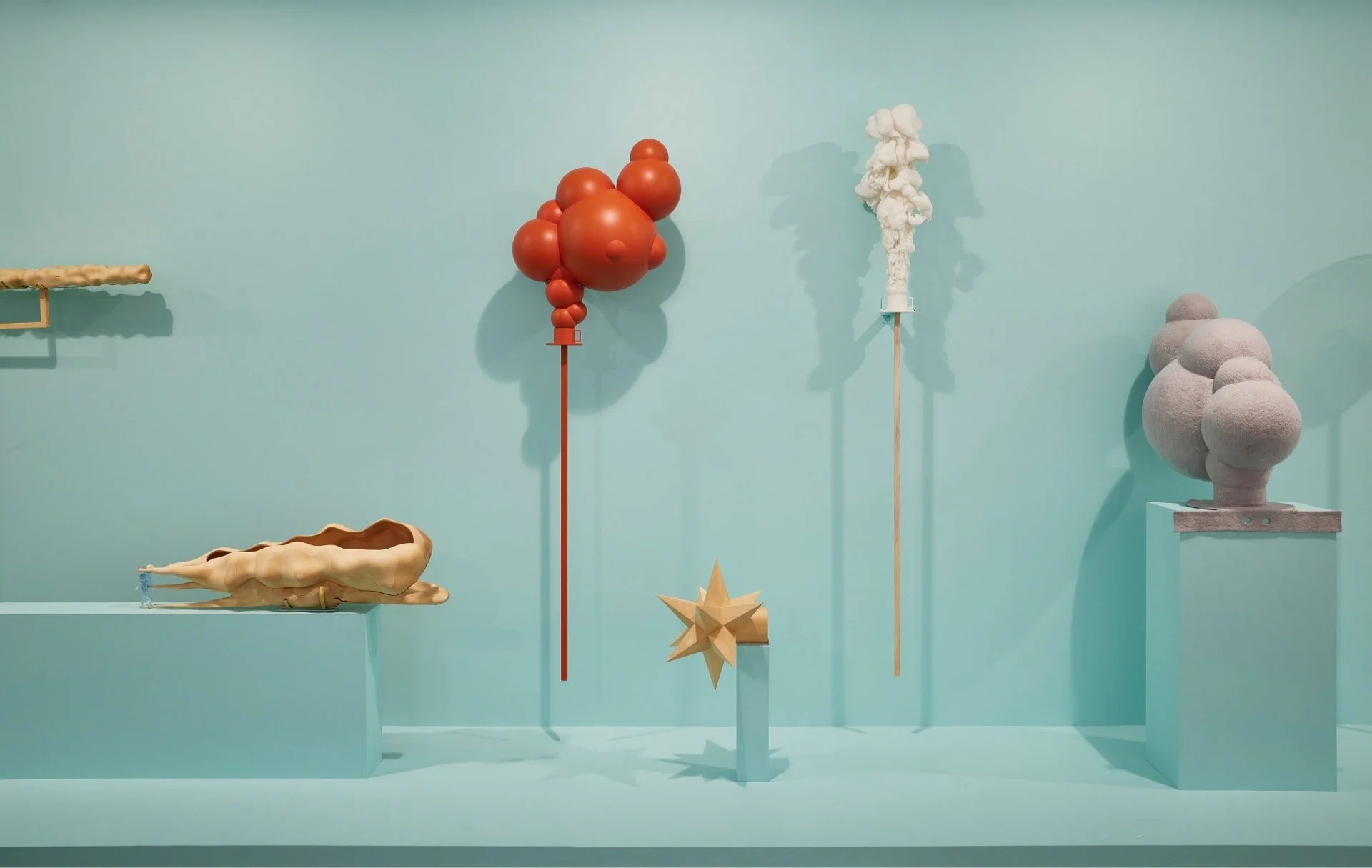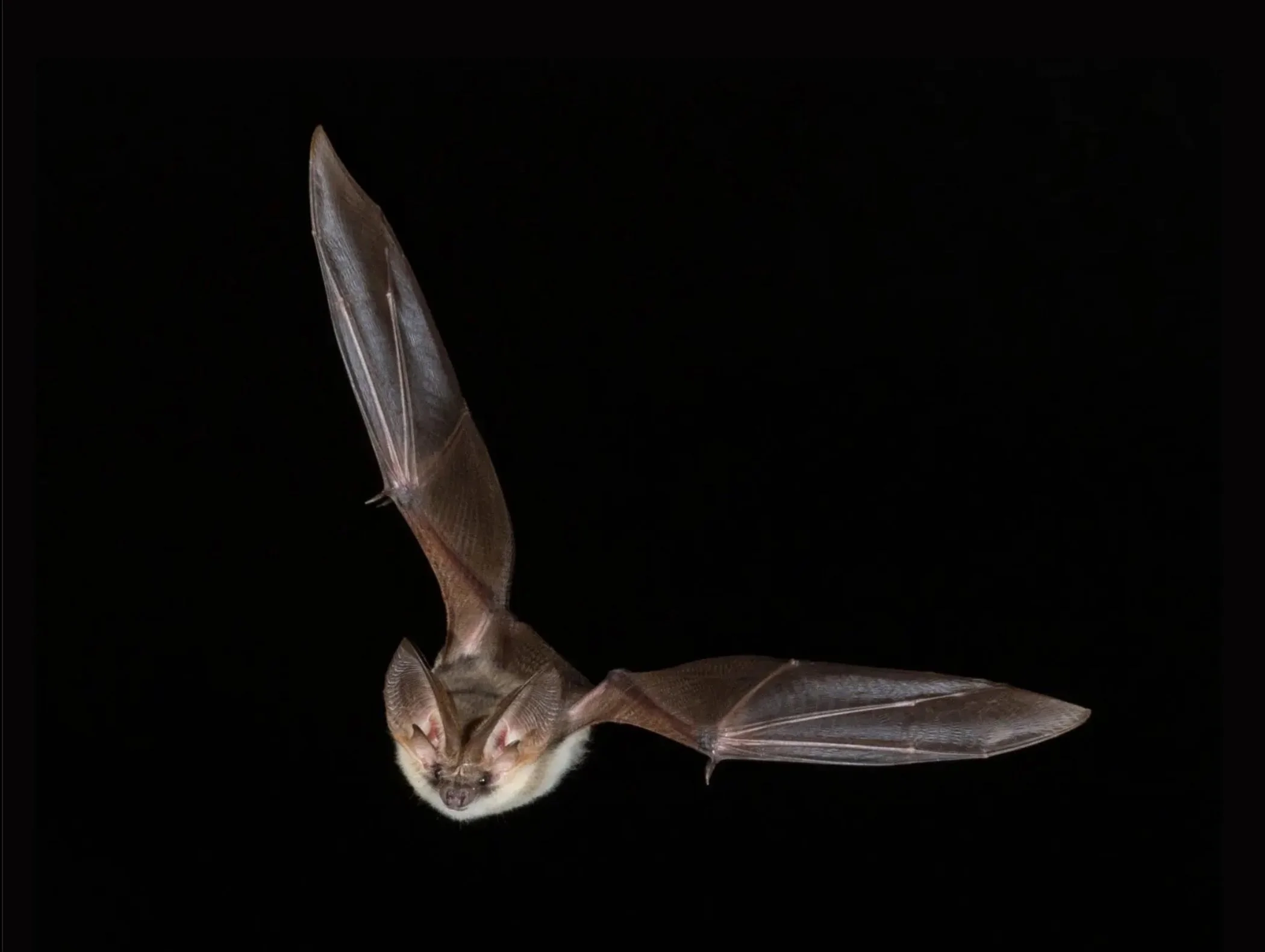Designs for a World of Many Worlds
by Dunne & Rabby | Designed Realities Studio
Designs for a World of Many Worlds: After the Festival depicts the imagined artefacts of a fictional festival celebrating a shift in the collective mindset of human beings. Moving away from a human-centric viewpoint, it is imagined by designers Dunne & Raby that humanity could come to understand its place in a multi-species reality, where each organism perceives and experiences their shared environments from a unique sensory perspective. Accompanying the totems and mementos, which illustrate how human-produced sound, fragrance and matter is experienced by other species, a festival costume, including a hat, shoes, glove and rucksack, suggests the celebratory garments of another time and place. Designs for a World of Many Worlds: After the Festival asks humans to imagine how they impact the worlds of other species and how their presence is perceived and spatialised.
What Is It Like to Be a Bat
by Thomas Nagel and Dunne & Raby
In his 1974 text ‘What is it like to be a bat?’, philosopher Thomas Nagel grappled withquestions of consciousness and the impossibility of truly experiencing the world as otherspecies do. Drawing on their multispecies speculations, designers Dunne & Raby provide anew reading of his work today
Consciousness is what makes the mind-body problem really intractable. Perhaps that is why current discussions of the problem give it little attention or get it obviously wrong. The recent wave of reductionist euphoria has produced several analyses of mental phenomena and mental concepts designed to explain the possibility of some variety of materialism, psychophysical identification, or reduction.’ But the problems dealt with are those common to this type of reduction and other types, and what makes the mind-body problem unique, and unlike the water-H₂0 problem or the Turing machine-IBM machine problem or the lightning-electrical discharge problem or the gene-DNA problem or the oak tree-hydrocarbon problem, is ignored.
Every reductionist has his favorite analogy from modern science. It is most unlikely that any of these unrelated examples of successful reduction will shed light on the relation of mind to brain. But philosophers share the general human weakness for explanations of what is incomprehensible in terms suited for what.
Treading lightly in a world of many worlds
by Fiona Raby
There is much talk in design about the ‘more than human’, ‘decentring the human’, ‘multi-species world building’ and other ‘related ideas’. But what does this actually mean for design practice? All too often it appears to simply be a welcoming of non-humans into a still-human world, or an expanding of the range of stakeholders in a project to include different species, or even the extension of co-design strategies to the other-thanhuman. This is all good, of course, but it still feels like a oneworld world, a human world.
Having spent many years living and working in cities, when we moved to the US we became fascinated by its many large areas of land rarely entered by humans. They feel like separate worlds where a different, non-human logic prevails. To spend any time in these places requires a great deal of preparation. You begin to see yourself not as human, but as stuff, material, part of the environment. At the same time, we moved from the city to a woodland where the walls of the house define a threshold between worlds. Inside is the human part, but directly outside is a multi-species zone, shared with many other creatures – bears, beavers, eagles, bugs, mycelia and the most extraordinary fungi.


